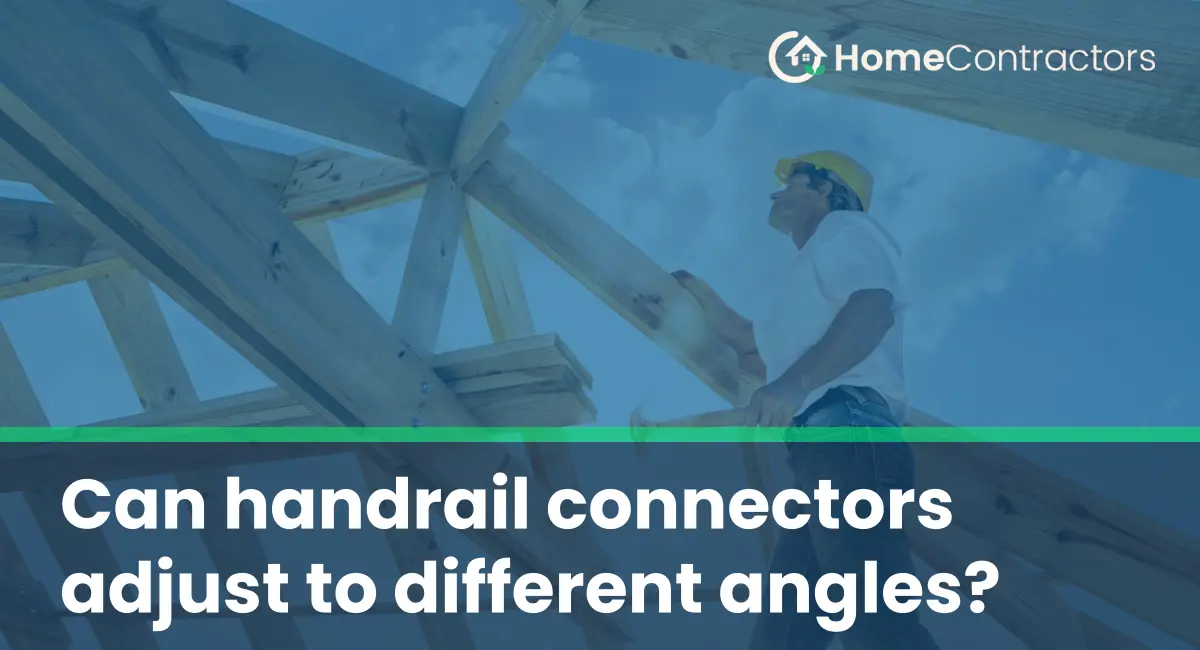Before diving into the main question, let’s first understand what handrail connectors are. Handrail connectors, also known as handrail brackets or fittings, are the components that connect the handrail to the wall or another handrail segment. These connectors ensure that the handrail remains firmly in place while providing support and stability to those using the handrail.
Standard Handrail Connectors
In most cases, standard handrail connectors are designed to accommodate straight handrail segments. These connectors have fixed angles and are manufactured to connect the handrail to the wall at a specific angle, typically 90 degrees. The fixed angle ensures a secure connection and prevents any wobbling or instability. However, this means that standard handrail connectors are not suitable for adjusting to different angles.
Adjustable Handrail Connectors
If you require handrail connectors that can adjust to different angles, there are adjustable handrail connector options available in the market. These connectors come with a range of angles that can be adjusted to match the desired handrail orientation. The adjustability feature allows flexibility in the handrail design, especially in situations where the handrail needs to follow a curved or angled path.
Advantages of Adjustable Handrail Connectors
- Versatility: Adjustable handrail connectors provide versatility in design as they can be modified to various angles, accommodating curved or angled handrail configurations. This flexibility allows for unique and creative handrail designs that can enhance the aesthetic appeal of the space.
- Easy Installation: Adjustable handrail connectors are designed to be user-friendly and allow for easy installation. Their adjustability feature means that adjustments can be made on-site without the need for additional customization or fabrication.
- Cost-Effectiveness: By opting for adjustable handrail connectors, you can save costs on customization or fabrication since you can adjust the angle of the connectors to fit your specific design requirements. This can be particularly advantageous for projects with limited budgets.
Considerations Before Using Adjustable Handrail Connectors
While adjustable handrail connectors offer flexibility, there are a few considerations to keep in mind before opting for them:
- Structural Integrity: Ensure that the adjustable handrail connectors you choose maintain the necessary strength and stability required for the intended use. Adequate weight-bearing capacity is crucial for ensuring the safety of those utilizing the handrail.
- Building Codes and Regulations: Consult local building codes and regulations to ensure that using adjustable handrail connectors is compliant with the requirements of your jurisdiction. Compliance with these standards is essential for maintaining safety standards.
- Maintenance: Adjustable handrail connectors may require periodic adjustments to ensure that the angles remain intact. Regular inspection and maintenance can help prevent any instability issues that may arise over time.
Standard handrail connectors are designed for fixed angles and are not suitable for adjusting to different angles. However, if you require flexibility in your handrail design, adjustable handrail connectors are the ideal solution. They offer versatility, easy installation, and cost-effectiveness. However, it is essential to consider factors such as structural integrity, building codes, and maintenance before incorporating adjustable handrail connectors into your project. By carefully evaluating these aspects, you can ensure a safe and visually appealing handrail system that meets your specific needs.
